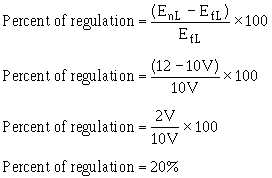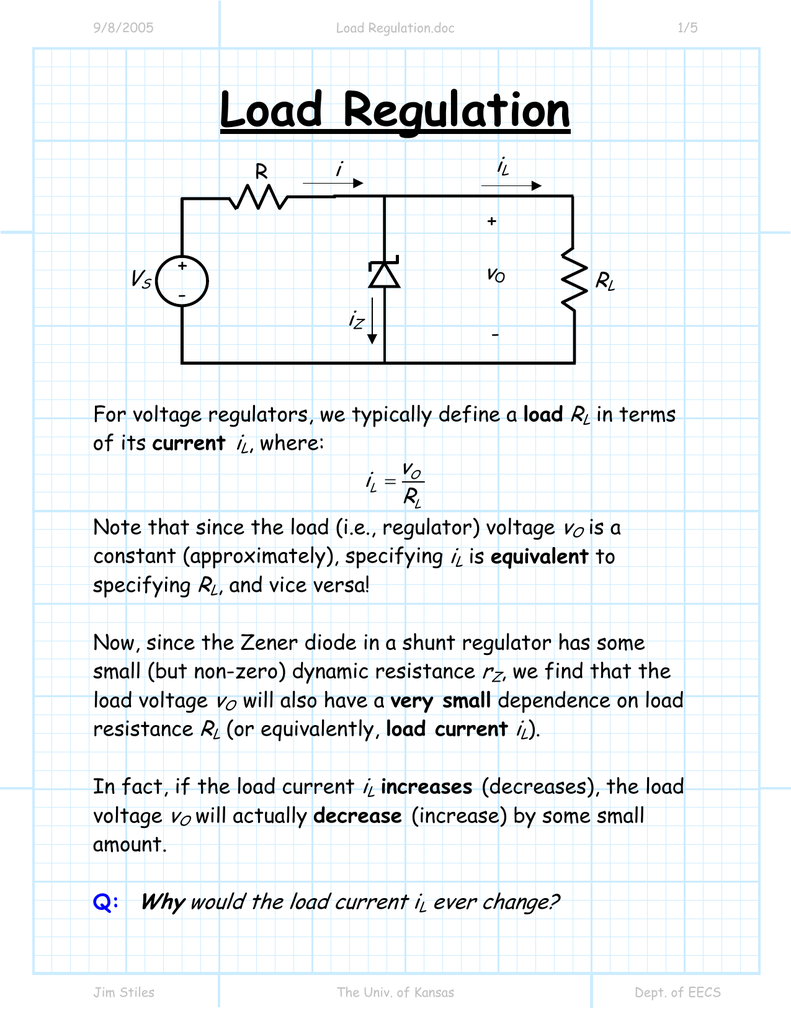Load Regulation : What it is
Load Regulation: What it is Introduction: Load regulation is an essential concept in the field of electrical engineering. It refers to the ability of a power supply or voltage regulator to maintain a steady output voltage despite changes in the load, ensuring a stable and reliable power supply to connected devices. In this post, we will delve deeper into load regulation, exploring its significance, working principles, and types. Additionally, we will discuss the importance of load regulation in various applications and provide some practical tips for achieving optimal load regulation. Subheading 1: Understanding Load Regulation Load regulation is a critical factor in ensuring the smooth operation of electrical systems. It involves the ability of a voltage regulator to maintain a constant output voltage despite fluctuations in the load connected to it. The load can be any electrical device or circuit that draws power from the regulator. Whether it's a small electronic gadget or a complex industrial machinery, load regulation plays a vital role in maintaining the stability and efficiency of the entire system. To accomplish load regulation, voltage regulators utilize various control mechanisms such as feedback loops, voltage references, and amplification circuits. These components work together to continuously monitor and adjust the output voltage to compensate for changes in the load. This ensures that the voltage supplied to the load remains within an acceptable range, irrespective of variations in the load's characteristics. Subheading 2: Types of Load Regulation There are primarily two types of load regulation: line regulation and load regulation. Let's explore each of them in detail: 1. Line Regulation: Line regulation refers to a voltage regulator's ability to maintain a steady output voltage despite changes in the input voltage or supply line voltage. It ensures that even if the input voltage fluctuates, the output voltage remains consistent. This is crucial for protecting sensitive electrical devices from voltage spikes and fluctuations that can potentially damage them. Line regulation is typically expressed as a percentage change in the output voltage per unit change in the input voltage. 2. Load Regulation: Load regulation, as discussed earlier, involves the ability of a voltage regulator to maintain a constant output voltage despite variations in the load current. It ensures that even if the connected devices draw different amounts of current, the output voltage remains stable. Load regulation is usually expressed as a percentage change in the output voltage for a given change in the load current. A low load regulation value indicates a more stable power supply and better overall performance. Subheading 3: The Importance of Load Regulation Load regulation plays a crucial role in numerous electrical applications. Let's explore some of its key importance in various fields: 1. Electronics and Telecommunications: In the field of electronics and telecommunications, load regulation is paramount for ensuring the optimal performance of devices like smartphones, laptops, routers, and communication systems. By regulating the voltage supplied to these devices, load regulation prevents potential damage to sensitive components and maintains stable operation, improving performance, and prolonging their lifespan. 2. Power Distribution and Industrial Applications: Power distribution systems and industrial machinery heavily rely on load regulation for consistent and reliable power supply. For industries, load regulation helps to avoid voltage sags or surges, which can lead to equipment malfunction, production downtime, and even safety hazards. By maintaining a stable output voltage, load regulation ensures the smooth operation of motors, pumps, generators, and other critical components. 3. Renewable Energy Systems: In the context of renewable energy systems, load regulation is essential for effective utilization of solar panels, wind turbines, and other renewable energy sources. These systems often face fluctuations in the energy they generate due to changing weather conditions. Load regulation enables stable integration of renewable energy into the power grid, ensuring consistent power supply, and minimizing reliance on non-renewable sources. FAQs: 1. Why is load regulation important in power supplies? Load regulation is crucial in power supplies as it guarantees a constant output voltage despite varying loads. This stability ensures that connected devices receive the required power without being affected by fluctuations. 2. How is load regulation measured? Load regulation is measured as a percentage change in the output voltage for a given change in the load current. A lower load regulation value indicates better stability and performance. 3. What are the common problems caused by poor load regulation? Poor load regulation can lead to voltage fluctuations, which may damage sensitive electronic components. It can also result in unstable performance, causing system failures, data loss, and reduced longevity of connected devices. Conclusion: Load regulation is a fundamental concept in electrical engineering, ensuring stable and reliable power supply in various applications. By maintaining a constant output voltage despite fluctuations in the load, load regulation plays a pivotal role in the smooth operation of devices and systems. Understanding the importance of load regulation and implementing effective measures can significantly enhance the performance, efficiency, and longevity of electrical systems.  Image Source : electriciantraining.tpub.com
Image Source : electriciantraining.tpub.com  Image Source : www.marpalex.co
Image Source : www.marpalex.co  Image Source : www.sunpower-uk.com
Image Source : www.sunpower-uk.com  Image Source : studylib.net
Image Source : studylib.net  Image Source : www.datasheets.com
Image Source : www.datasheets.com  Image Source : techweb.rohm.com
Image Source : techweb.rohm.com  Image Source : www.youtube.com
Image Source : www.youtube.com  Image Source : www.sunpower-uk.com
Image Source : www.sunpower-uk.com
LOAD REGULATION
 Image Source : electriciantraining.tpub.com
Image Source : electriciantraining.tpub.com regulation formula
Load Regulation定義 – Mike On Slow
 Image Source : www.marpalex.co
Image Source : www.marpalex.co What Is Load Regulation? - Sunpower UK
regulation load sunpower where
Load Regulation
 Image Source : studylib.net
Image Source : studylib.net regulation load multisection transformer binomial matching studylib
Typical Application For SG217 1.5A Three Terminal Adjustable Voltage
 Image Source : www.datasheets.com
Image Source : www.datasheets.com Load Regulation | Evaluating A Switching Regulator: Output Voltage
 Image Source : techweb.rohm.com
Image Source : techweb.rohm.com Zener Regulator - Load Regulation - YouTube
 Image Source : www.youtube.com
Image Source : www.youtube.com regulation load zener regulator
What Is Load Regulation? - Sunpower UK
load regulation voltage sunpower electronic current determining il vfl
Zener regulator. Regulation load multisection transformer binomial matching studylib. Regulation load sunpower where. Load regulation. What is load regulation?